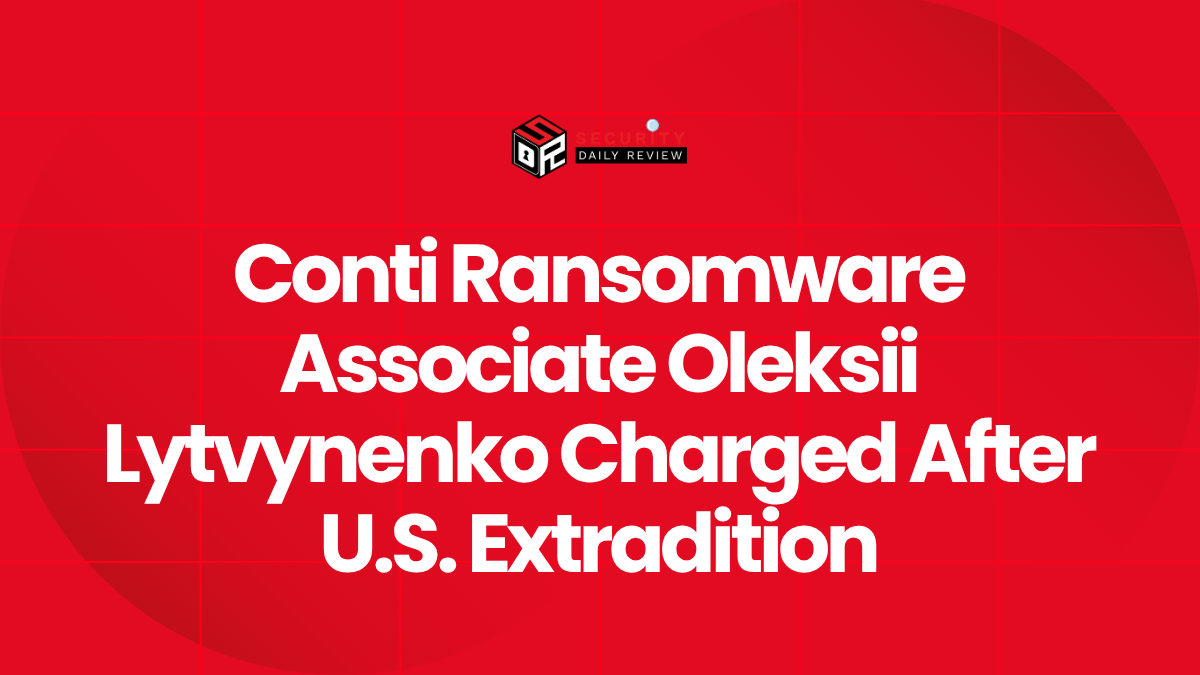Ukrainian national Oleksii Lytvynenko, 43, now faces formal charges in the United States for his alleged role in the Conti ransomware campaign—one of the most prolific and destructive cybercrime operations in recent years. Lytvynenko’s extradition, completed by U.S. officials after coordinated legal action in Ireland, underscores the growing global push to hold ransomware affiliates accountable beyond borders.
The U.S. Expands its Reach Against Ransomware Actors
Lytvynenko’s Extradition Marks a Milestone in Transnational Cybercrime Enforcement
Lytvynenko was taken into custody by Irish authorities after fleeing war-torn Ukraine in 2022. Following a legal process initiated by the U.S., he was extradited and appeared in a U.S. courtroom this week to respond to charges related to his alleged role in the Conti ransomware group. This marks a significant milestone in international legal cooperation for cybercrime enforcement.
The Justice Department alleges that Lytvynenko acted as an enabler for Conti’s ransomware infrastructure by assisting in maintaining the servers and tools used to deploy malicious payloads and manage victim communications. Prosecutors assert that these systems played a crucial role in the operation’s highly organized ransomware-as-a-service (RaaS) scheme.
The Case Against Lytvynenko Highlights System-Level Contributions
According to court filings, Lytvynenko is not accused of directly deploying Conti ransomware or conducting negotiations with victims. Instead, his alleged involvement centers on technological support operations that made the broader campaign possible. These allegations reflect a trend in U.S. law enforcement strategies—targeting not just front-line operators but also technical contributors in ransomware ecosystems.
The charges he faces carry significant penalties, potentially including multiple years in federal prison if convicted. Authorities emphasized that Lytvynenko’s role, though not always public-facing, was instrumental in maintaining infrastructure that enabled financial extortion and disruption across multiple U.S.-based organizations.
Conti Ransomware’s Global Footprint and its Rapid Rise
From RaaS Model to State-Affiliated Allegations
Conti ransomware emerged in late 2019 as a successor to the Ryuk ransomware family and quickly became one of the most notorious strains. By offering ransomware-as-a-service, Conti allowed affiliates to launch attacks using its tools in exchange for a cut of the ransom—at times demanding payments in the tens of millions of dollars. Its targets included:
- Health care systems
- Educational institutions
- Critical infrastructure providers
- Local governments
In 2021 and early 2022, Conti made headlines for attacking Costa Rica’s government, forcing multiple ministries to halt operations. More controversially, the group pledged allegiance to the Russian government during the early stages of the invasion of Ukraine, triggering internal dissension and eventually leading to the public leak of Conti’s internal data, including chat logs and source code, by a Ukrainian security researcher.
These leaks exposed the inner workings of one of the most hierarchical ransomware groups ever documented, including insights into its command structure, internal policies, and salary models. The revelations shattered the sense of anonymity often assumed by ransomware operators and affiliates.
Legal and Strategic Implications for Cybercrime Prosecution
This Case Could Serve as a Blueprint for Pursuing Technical Facilitators
Lytvynenko’s arrest and charges exemplify a shifting strategy that focuses not only on ransomware deployers but also on the ecosystem enablers—system administrators, developers, and communicators. By indicting and extraditing non-operational affiliates, U.S. authorities aim to fracture the essential support networks behind ransomware-as-a-service operations.
This legal precedent may prompt increased caution among peripheral actors who have historically believed they were shielded from direct prosecution due to their support-only roles. It also reflects law enforcement’s evolving approach to disrupting ransomware infrastructures by holding all contributors legally accountable.
Post-Conti Landscape Remains Volatile
Though Conti’s dedicated infrastructure was formally decommissioned in mid-2022 following internal conflicts and sanctions pressure, its former members have splintered into new groups and operations. Many of these rebranded groups maintain operational ties, codebases, or leadership roots back to Conti.
Examples include:
- Royal ransomware group
- Black Basta
- Zeon ransomware
For this reason, cyber defenders and intelligence analysts continue to monitor indicators of compromise (IOCs) and tactics, techniques, and procedures (TTPs) linked to Conti-derived malware sets. Arrests like Lytvynenko’s could become increasingly vital in mapping the diaspora of the group’s former operators and facilitators.
Looking Ahead: Enforcement Trends and Deterrent Value
U.S. Prosecutors Signal a Commitment to International Cybercrime Pursuits
By securing extradition from a third country and publicly indicting a foreign national, the U.S. reinforces its commitment to transnational cooperation on ransomware threats. The Lytvynenko case highlights the importance of extradition treaties, bilateral cybersecurity partnerships, and coordinated intelligence sharing across jurisdictions.
Cybersecurity professionals should interpret this enforcement action as a formal warning that technical support roles in cybercrime are no longer insulated from prosecution. With the ransomware ecosystem growing in complexity—and blending infrastructure roles with financial fraud and data exfiltration—global enforcement teams are adapting in real-time.
As ransomware-affiliated individuals seek refuge in neutral or remote regions, cases like Lytvynenko’s demonstrate that geographic distance may offer diminishing protection from prosecution. The global cybersecurity community will likely continue to see a rising number of extraditions amidst mounting pressure to dismantle ransomware networks like Conti from the inside out.









